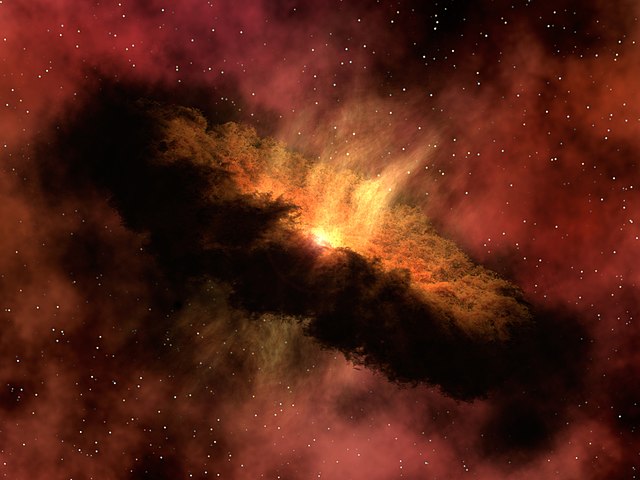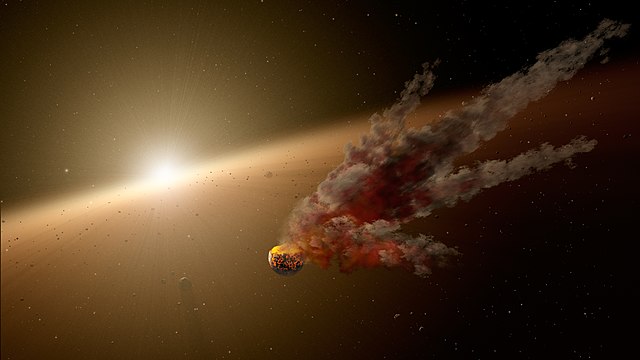Saturn is the sixth planet from the Sun and the second-largest in the Solar System, after Jupiter. It is a gas giant with an average radius of about nine-and-a-half times that of Earth. It has only one-eighth the average density of Earth, but is over 95 times more massive. Even though Saturn is nearly the size of Jupiter, Saturn has less than one-third of Jupiter's mass. Saturn orbits the Sun at a distance of 9.59 AU (1,434 million km) with an orbital period of 29.45 years.
Saturn and its prominent rings, as captured by the Cassini orbiter
A global storm girdles the planet in 2011. The storm passes around the planet, such that the storm's head (bright area) passes its tail.
Auroral lights at Saturn's north pole
Artist conception of Saturn, its rings and major icy moons—from Mimas to Rhea
A planet is a large, rounded astronomical body that is neither a star nor its remnant. The best available theory of planet formation is the nebular hypothesis, which posits that an interstellar cloud collapses out of a nebula to create a young protostar orbited by a protoplanetary disk. Planets grow in this disk by the gradual accumulation of material driven by gravity, a process called accretion. The Solar System has at least eight planets: the terrestrial planets Mercury, Venus, Earth, and Mars, and the giant planets Jupiter, Saturn, Uranus, and Neptune.
The eight planets of the Solar System with size to scale (up to down, left to right): Saturn, Jupiter, Uranus, Neptune (outer planets), Earth, Venus, Mars, and Mercury (inner planets)
A protoplanetary disk
Asteroids colliding during planet formation
The Sun's, planets', dwarf planets' and moons' size to scale, labelled. Distance of objects is not to scale. The asteroid belt lies between the orbits of Mars and Jupiter, the Kuiper belt lies beyond Neptune's orbit.








